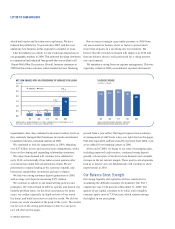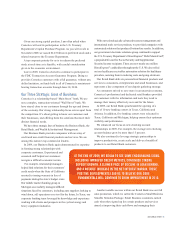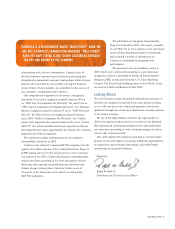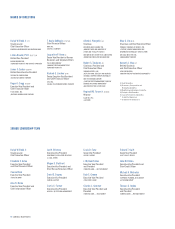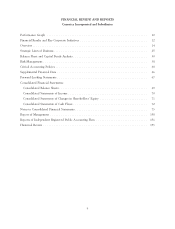Comerica 2009 Annual Report Download - page 16
Download and view the complete annual report
Please find page 16 of the 2009 Comerica annual report below. You can navigate through the pages in the report by either clicking on the pages listed below, or by using the keyword search tool below to find specific information within the annual report.OVERVIEW
Comerica Incorporated (the Corporation) is a financial holding company headquartered in Dallas, Texas.
The Corporation’s major business segments are the Business Bank, the Retail Bank and Wealth & Institutional
Management. The core businesses are tailored to each of the Corporation’s four primary geographic markets:
Midwest, Western, Texas and Florida.
The accounting and reporting policies of the Corporation and its subsidiaries conform to U.S. generally
accepted accounting principles (GAAP) and prevailing practices within the banking industry. The Corporation’s
consolidated financial statements are prepared based on the application of accounting policies, the most
significant of which are described in Note 1 to the consolidated financial statements. The most critical of these
significant accounting policies are discussed in the ‘‘Critical Accounting Policies’’ section of this financial review.
As a financial institution, the Corporation’s principal activity is lending to and accepting deposits from
businesses and individuals. The primary source of revenue is net interest income, which is derived principally
from the difference between interest earned on loans and investment securities and interest paid on deposits and
other funding sources. The Corporation also provides other products and services that meet the financial needs
of customers and which generate noninterest income, the Corporation’s secondary source of revenue. Growth in
loans, deposits and noninterest income is affected by many factors, including economic conditions in the
markets the Corporation serves, the financial requirements and health of customers, and successfully adding new
customers and/or increasing the number of products used by current customers. Success in providing products
and services depends on the financial needs of customers and the types of products desired.
More than half of the Corporation’s revenues are generated by the Business Bank business segment, making
the Corporation highly sensitive to changes in the business environment in its primary geographic markets. To
facilitate better balance among business segments and geographic markets, the Corporation opened 10 new
banking centers in 2009 in markets with favorable demographics and plans to continue banking center
expansion in these markets. This is expected to provide opportunity for growth across all business segments,
especially in the Retail Bank and Wealth & Institutional Management segments, as the Corporation penetrates
existing relationships through cross-selling and develops new relationships.
For 2010, management expects the following, compared to 2009, based on a modestly improving economic
environment:
– Management expects low single-digit period-end to period-end loan growth. Investment securities
available-for-sale are expected to remain at a level similar to year-end 2009.
– Based on no increase in the Federal Funds rate, management expects an average full-year net interest
margin between 3.15 percent and 3.25 percent, reflecting the benefit, compared to full-year 2009, from
improved loan pricing, lower funding costs and a lower level of excess liquidity.
– Management expects full-year net credit-related charge-offs to decrease to between $775 million and
$825 million. The provision for credit losses is expected to be slightly in excess of net charge-offs.
– Management expects flat noninterest income, after excluding $243 million of 2009 net securities gains.
– Management expects a low single-digit decrease in noninterest expenses.
– Management expects income tax expense to approximate 35 percent of income before income taxes less
approximately $60 million of permanent differences related to low-income housing and bank-owned life
insurance.
14


